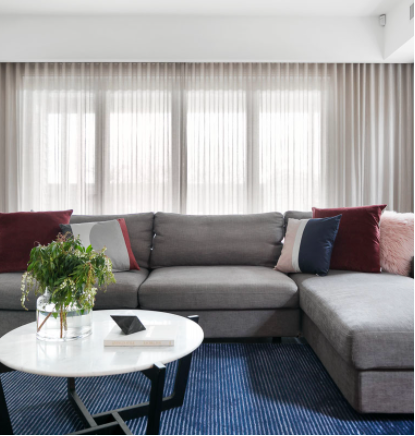So many people I speak to tell me that they’re not able to design their own homes because they’re really bad at visualising the end result. They feel like, just because they don’t have a clear picture of the possible solution at the very beginning, they’re not capable of doing it themselves.
But the process of creating a house is very much a process, not one idea or solution – if you’re waiting for a fully resolved and detailed idea to pop into your head before you’re ready to get started, then you might find yourself unsure how to move forward and doubting your own abilities.
When you’re creating something that’s never been created before (like a custom home), you need to embrace the idea that design is the evolution of a solution – the uncertainty around the final destination is inevitable. That’s part of the deal.
So, here’s a bit of a summary of the creative process and how this might look if you’re designing your home…
Step One : Planning
The first step is all about identifying the problem, defining the criteria for success and collecting information and early ideas.
What you should be doing : Writing a design brief and researching ideas.
Step Two : Ideation
The second step requires big picture thinking, as you become open to a range of possible solutions to the problems that you’ve identified. At this stage, your ideas don’t need to be fully resolved and detailed, that will come later. We want a broad range of possible directions that can be considered.
What you should be doing : Creating mood boards and schematic sketches
Step Three : Development
The third step involves fleshing out some of the specifics of how a broad concept might look. It involves testing, failing and revising your ideas until you have something that provides a viable solution to the problem you’re trying to solve.
What you should be doing : Developing concept boards and detailed floorplans
Step Four : Verification
The final step allows you to fully develop your idea and resolve any issues that have been identified. This is the point where your idea gets final refinements and polish before you’re ready to make it happen.
What you should be doing : Final drawings and detailed specifications
If you’re feeling like you’re all over the place and bouncing between different ideas, without a clear way of processing them, I’d encourage you to use this process as a way to move from loose ideas and concepts, through to more detailed plans for how you can make it happen.
Embrace the uncertainty that comes with creating something unique – it’s part of the fun of design and it’s where all the magic happens.

Design is only a small piece of the puzzle…
Whilst people usually reach out for help with their projects because they believe that they need help with the design, what has become very clear to me is that design is only a small piece of the puzzle

What are the options for window coverings?
Window coverings are important to help you to achieve the particular look that you are wanting to achieve, but they’re also going to play an important role in keeping your home well-insulated and running efficiently.

Be the first to comment